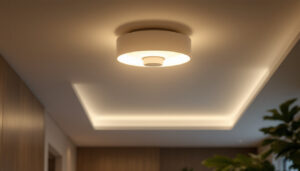

A19 bulbs are a staple in the lighting industry, known for their versatility and efficiency. However, navigating the world of A19 bulbs can be fraught with challenges. For lighting contractors, understanding the nuances of these bulbs is essential to ensure client satisfaction and project success. This guide aims to illuminate the common pitfalls associated with A19 bulbs and provide practical advice for contractors.
A19 bulbs are a type of incandescent or LED light bulb characterized by their pear-shaped design and a standard E26 base. The “A” in A19 refers to the bulb’s shape, while “19” denotes its diameter in eighths of an inch, making it approximately 2.375 inches wide. These bulbs are widely used in residential and commercial settings due to their familiar design and ease of installation.
Available in various wattages and color temperatures, A19 bulbs can meet diverse lighting needs. From warm white for cozy home environments to cooler temperatures for task-oriented spaces, the options are plentiful. However, the choice of bulb can significantly impact the overall ambiance and functionality of a space, making it crucial for contractors to be well-informed. Additionally, energy-efficient LED A19 bulbs have gained popularity as they consume less power and have a longer lifespan compared to traditional incandescent bulbs, providing both economic and environmental benefits.
A19 bulbs are suitable for a wide range of applications. They are commonly used in table lamps, ceiling fixtures, and wall sconces. Their versatility extends to both indoor and outdoor settings, though outdoor use typically requires bulbs designed to withstand the elements.
In residential settings, A19 bulbs are often chosen for living rooms, bedrooms, and kitchens, where they provide general lighting. In commercial environments, they can be used in retail spaces, offices, and restaurants to create inviting atmospheres. Understanding where and how to use A19 bulbs effectively is key to maximizing their benefits. For instance, in a retail setting, using A19 bulbs with a higher color rendering index (CRI) can enhance the appearance of products, making them more appealing to customers. Furthermore, the ability to dim A19 LED bulbs allows for greater control over lighting levels, enabling businesses to adapt the ambiance for different times of day or special events, thus enhancing the customer experience.
One of the most common mistakes contractors make is selecting A19 bulbs with mismatched color temperatures. Color temperature is measured in Kelvin (K), and it affects the mood and functionality of a space. A warm white bulb (around 2700K) creates a cozy atmosphere, while a cool white bulb (around 4000K) is better suited for task lighting.
When lighting a space, it’s essential to consider the intended use and the existing color palette. Mixing different color temperatures can lead to an unappealing and inconsistent lighting scheme. Contractors should always consult with clients about their preferences and the desired ambiance before making a final decision on bulb selection. For example, in a living room designed for relaxation, a warm white bulb can enhance the comfort of the space, while a cool white bulb in a kitchen can improve visibility and functionality. Understanding the psychological impact of color temperature can help contractors create harmonious environments that meet both aesthetic and practical needs.
Another pitfall is overlooking the wattage and lumen output of A19 bulbs. Wattage indicates energy consumption, while lumens measure brightness. Many contractors mistakenly equate higher wattage with brighter light, but this is not always the case, especially with LED bulbs.
It’s important to educate clients about the benefits of lumens over wattage when choosing A19 bulbs. For instance, a 10-watt LED bulb can produce the same amount of light as a 60-watt incandescent bulb, significantly reducing energy costs. Providing clients with clear information on lumens can help them make informed choices that meet their lighting needs. Additionally, discussing the concept of efficacy, which is the ratio of lumens to watts, can further empower clients to select energy-efficient options that not only save money but also contribute to a more sustainable environment. This knowledge can be particularly valuable in commercial settings where energy consumption is closely monitored and managed.
As more clients seek customizable lighting solutions, the demand for dimmable A19 bulbs has increased. However, not all A19 bulbs are compatible with dimmer switches. Using non-dimmable bulbs with dimmers can lead to flickering, buzzing, or even damage to the bulb or fixture.
Contractors should always check the specifications of A19 bulbs before installation and ensure that they are compatible with the dimming systems in place. Additionally, educating clients about the benefits of using dimmable bulbs can enhance their overall lighting experience, allowing them to adjust the brightness according to their needs. For instance, in a dining area, dimmable lighting can create an intimate setting for meals, while in a home office, brighter lighting can help maintain focus during work hours. Furthermore, introducing clients to smart dimming solutions that can be controlled via mobile apps or voice commands can elevate their lighting experience, making it not just functional but also innovative and user-friendly.
energy efficiency is a crucial consideration when selecting A19 bulbs. LED options are significantly more energy-efficient than traditional incandescent bulbs, consuming up to 80% less energy. This not only reduces electricity bills but also contributes to a more sustainable environment.
When advising clients, it’s beneficial to highlight the long lifespan of LED A19 bulbs, which can last up to 25,000 hours compared to the 1,000-hour lifespan of incandescent bulbs. This longevity translates to fewer replacements and lower maintenance costs, making LED A19 bulbs a smart investment.
The quality of A19 bulbs can vary significantly between manufacturers. Contractors should prioritize reputable brands known for their reliability and performance. Investing in high-quality bulbs can prevent issues such as flickering, premature burnout, and color inconsistency.
Reading reviews and seeking recommendations from industry peers can help contractors identify trustworthy brands. Additionally, staying informed about product recalls and safety standards is essential for ensuring client safety and satisfaction.
Proper handling and installation of A19 bulbs are vital for optimal performance. Contractors should always handle bulbs with care, avoiding direct contact with the glass to prevent oil transfer, which can lead to overheating and premature failure.
When installing A19 bulbs, it’s important to ensure that the fixture is compatible and that the bulb is securely fitted. Loose connections can result in flickering or complete failure. Additionally, contractors should take care to follow the manufacturer’s installation guidelines to avoid voiding warranties.
Before completing a project, conducting thorough testing of installed A19 bulbs is essential. This includes checking for consistent brightness, color accuracy, and compatibility with dimmers. Addressing any issues before finalizing the project can prevent callbacks and enhance client satisfaction.
Implementing a quality assurance process can also help identify potential problems early on. Keeping a checklist of common issues and solutions can streamline this process and ensure a high standard of work.
Educating clients about A19 bulbs can enhance their overall experience and satisfaction with the lighting solutions provided. Contractors should take the time to explain the benefits of different types of A19 bulbs, including energy efficiency, color temperature, and lifespan.
Providing printed materials or links to reputable online resources can help clients make informed decisions long after the installation is complete. This not only builds trust but also positions the contractor as a knowledgeable professional in the field.
Encouraging feedback from clients can provide valuable insights into their experiences with A19 bulbs. Open communication allows contractors to address any concerns and make adjustments as necessary. This proactive approach can lead to repeat business and referrals.
Establishing a follow-up system, whether through phone calls or emails, can help maintain relationships with clients. This not only shows that the contractor cares about their satisfaction but also opens the door for future projects.
The future of A19 bulbs is closely tied to advancements in smart lighting technology. Smart A19 bulbs offer features such as remote control, scheduling, and integration with home automation systems. These innovations provide clients with enhanced convenience and customization options.
Contractors should stay informed about the latest smart lighting products and trends, as this knowledge can help them offer cutting-edge solutions to clients. Understanding how to install and configure smart A19 bulbs can set contractors apart in a competitive market.
As sustainability becomes a priority for many consumers, the demand for eco-friendly lighting solutions is on the rise. A19 bulbs made from recyclable materials and those that minimize environmental impact are gaining popularity.
Contractors should consider incorporating eco-friendly options into their offerings and educate clients about the benefits of sustainable lighting. This not only aligns with consumer values but also positions contractors as responsible and forward-thinking professionals.
Working with A19 bulbs presents both opportunities and challenges for lighting contractors. By understanding the common pitfalls and implementing best practices, contractors can enhance their service quality and client satisfaction. Staying informed about advancements in technology and sustainability will ensure that contractors remain competitive in a rapidly evolving industry.
Ultimately, the key to success lies in education, communication, and a commitment to quality. By prioritizing these elements, lighting contractors can navigate the complexities of A19 bulbs and deliver exceptional lighting solutions that meet the diverse needs of their clients.
Ready to avoid the pitfalls and shine a light on your next project with confidence? At LumenWholesale, we provide lighting contractors like you with the highest quality A19 bulbs and other spec-grade lighting products at unbeatable wholesale prices. Say goodbye to local distributor markups and hello to a vast selection of reliable, high-performance lighting that meets the highest industry standards. Plus, with free shipping on bulk orders, you can stock up on premium lighting solutions without worrying about hidden fees or compromises. Elevate your lighting game and ensure client satisfaction with every installation. Discover the perfect blend of quality, affordability, and convenience at LumenWholesale – Wholesale Lighting at the Best Value.

Discover how warehouse pendant lights not only illuminate vast spaces but also enhance safety in lighting installations.

Discover why purchasing architectural X-shaped linear lights in bulk from local distributors might not be the best choice.

Discover the transformative impact of LED lamp fixtures through compelling real-world success stories.

Discover essential tips for lighting contractors to seamlessly install under cabinet LED lighting.
Get notified when NEW deals are released.
Optimize your budget with wholesale discounts.
Only top-quality, specification-grade lighting products.
No additional costs at checkout - what you see is what you pay.
We understand the unique needs of contractors.